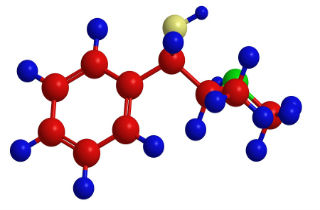Pseudoephedrine addiction signs are physical, emotional, and/or behavioral. We review signs of pseudoephedrine addiction here and invite your questions about treating pseudoephedrine addiction at the end. We try to answer all questions personally and promptly.
Pseudoephedrine addiction signs
It is not always easy to identify the signs of addiction, because at times we can tend to be in denial. But if you notice signs of addiction in yourself or in someone else, getting help for pseudoephedrine addiction early increases chances of a successful recovery from addiction. In fact, you are the best person to identify changes in a loved one and support them to make a change.
Symptoms of pseudoephedrine addiction
Symptoms of pseudoephedrine addiction are both physical and behavioral in nature. The Diagnostic criteria for Substance Dependence defines substance dependence or addiction as:
“A maladaptive pattern of substance use, leading to clinically significant impairment or distress, as manifested by three or more of the following, occurring at any time in the same 12-month period.”
For pseudoephedrine, symptoms of addiction can include all or parts of the following:
1. Tolerance, as defined by either of the following:
a. a need for markedly increased amounts of pseudoephedrine to achieve Intoxication or desired effect.
b. markedly diminished effect with continued use of the same amount of pseudoephedrine.
2. Withdrawal, as manifested by either of the following:
a. the characteristic withdrawal syndrome for pseudoephedrine.
b. the same or a closely related substance is taken to relieve or avoid withdrawal symptoms.
3. Dosage: Pseudoephedrine is often taken in larger amounts or over a longer period than was intended.
4. Loss of control: There is a persistent desire or unsuccessful efforts to cut down or control use of pseudoephedrine.
5. Time: A great deal of time is spent in activities necessary to obtain pseudoephedrine, use pseudoephedrine, or recover from its effects.
6. Change in priorities: Important social, occupational, or recreational activities are given up or reduced because of pseudoephedrine use.
7. Continued use: Pseudoephedrine use is continued despite knowledge of having a persistent or recurrent physical or psychological problem that is likely to have been caused or exacerbated by the substance.
Pseudoephedrine addiction symptoms: Can they be treated?
YES! In some cases, the first step to getting help is organising an intervention for your loved one.
An intervention is a process involving family and friends and possibly others who care about a person struggling with addiction. An intervention allows people to gather together to confront the person about the consequences of addiction and ask him or her to accept treatment. This process is not about judging but highlighting and supporting people with addiction to get help.
It’s important not to wait until someone “wants help” for pseudoephedrine addiction. Instead, think of an intervention as giving your loved one a clear opportunity to make changes before things get really bad. If you don’t feel confident to organise an intervention yourself there are some services that offer intervention planning. Once your loved one agrees to seek support you can begin to consider what type of support they may need.
Symptoms of pseudoephedrine addiction: How to treat them?
1. Inpatient treatment for pseudoephedrine addiction
Inpatient treatment may be part of a hospital program or found in special clinics. You’ll sleep at the facility and get therapy in the day or evening. You may stay for a month or two, depending on how your recovery is going. Some people stay in inpatient treatment for 3-6 months, or longer. After inpatient treatment, outpatient treatment is recommended for more counseling and group therapy. Inpatient treatment for pseudoephedrine addiction may be a good option if:
- You’ve tried outpatient treatment but it didn’t work.
- You have other physical or mental health problems.
- Your home situation makes it hard to stay away from drugs or alcohol.
- You don’t live near an outpatient treatment clinic.
2. Outpatient treatment for pseudoephedrine addiction
Outpatient treatment happens in mental health clinics, counselors’ offices, hospital clinics, or local health department offices. Unlike inpatient treatment, you don’t stay overnight. Outpatient treatment may be a good option if:
- You can’t or don’t want to quit work or take a leave of absence.
- You want to be close to loved ones.
- Inpatient treatment is too expensive.
3. Address the psychological symptoms of pseudoephedrine addiction
Psychotherapy options for treating signs and symptoms of addiction to pseudoephedrine include:
- Behavioral modification has its primary focus on empowering the individual to control the behavior.
- Cognitive therapies are those that focus on conscious mental processes. They seek to eliminate unhealthy or nonproductive thought processes.
- Holistic treatment involves rehabilitation programs that focus on the whole individual, not just the presenting or primary problem of addiction.
Pseudoephedrine addiction symptoms questions
Still have questions about how to address psuedoephedrine addiction? Maybe you have an experience to share? If so please, share your questions and experiences about pseudoephedrine addiction symptoms and we will respond to you personally and promptly.









Related Posts